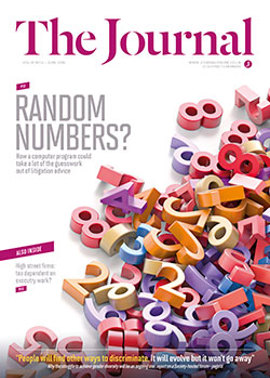Opinion: Simon Di Rollo

Strong indignation from newspapers, following the Supreme Court decision in PJS v News Group Newspapers [2016] UKSC 26 to prevent further publication of material already widely known, was only to be expected.
In January 2016, the Court of Appeal granted an interim injunction against the Sun on Sunday publishing a story involving one half of a famous married couple being involved in unconventional sexual activity. Although many readers might be interested, there was and is no public interest in the story in a legal sense. Publication would be devastating for the plaintiff and result in increased press attention for the children, and so constituted a breach of the right to privacy.
Despite the injunction, the story circulated beyond the court’s reach in the USA, Canada and Scotland, and on the internet. In April, News Group applied for the interim injunction to be set aside, citing this extensive availability.
The Court of Appeal granted the application, but the Supreme Court reinstated the interim injunction.
The four to one majority held that the appellant was likely at trial to establish that publication of the story would involve “further tortious invasion of privacy rights of the appellant and his partner, as well as of their children, who have, of course, no conceivable involvement in the conduct in question. The invasion would, on present evidence, be clear, serious and injurious.”
A key feature of the majority opinions is the emphasis on the intrusive and distressing effect that publication in the national press and the removal of geo-blocking of search engines would have. The right to privacy goes beyond mere confidentiality. It involves the protection of private space. It is a particular type of right that cannot be easily vindicated by a public finding at trial (unlike, say, defamation), and may not be protected by a conventional award of damages. The protection against intrusion and distress includes protection against the harassment that publication in the mainstream print media would inevitably entail.
Protection of private family life had received insufficient attention in the Court of Appeal. The children concerned have independent privacy interests of their own. These interests are protected, not just by ECHR article 8, but also by article 3 of the UN Convention on the Rights of the Child, brought into play by a combination of the Human Rights Act 1998, s 12(4)(b) and the Editors’ Code of Practice of January 2016. In short, a court is bound to put the interests of an affected child first and only an exceptional public interest would permit publication.
How great would the public interest have to be, particularly where connected children are involved? In that regard the court makes clear that (1) neither article 8 nor article 10 (freedom of expression) has preference over the other; (2) where their values are in conflict, an intense focus is needed on the comparative importance of the rights being claimed in the individual case; (3) the justifications for interfering with or restricting each right must be taken into account; and (4) the proportionality test must be applied.
On the other hand, even if there is no public interest in the story it is still necessary to justify an order preventing its publication. If a wrongful invasion of privacy is anticipated it is still necessary, odd though it may seem and easy to achieve though it may be, to satisfy s 12 of the 1998 Act to override freedom of expression.
The case highlights the difficulty in striking a balance between article 8 and article 10. In Scotland there remains uncertainty as to the scope of an action for breach of privacy. Is there a recognisable civil wrong enforceable by one individual against another? If so, could exemplary damages be awarded in an appropriate case? The direction of travel in England and in light of PJS appears to point to an affirmative answer to these questions.
If a breach of article 8 can constitute a delict, an outlet of the Scottish media may be liable in damages even though not restrained by any foreign injunction. Further, even if an injunction or interdict is sought and refused, it does not follow that an action for breach of privacy could not be successfully brought. It is unlikely that the architects of the 1998 Act had this in mind when they brought rights home in the late 1990s.
In this issue
- Brexit: a brand new world
- Plans reports: an evolving scene
- Law and IT: time for a new blend
- Care proceedings, the EU and foreign nationals
- Reading for pleasure
- Opinion: Simon Di Rollo
- Book reviews
- Profile
- President's column
- Coming down the line
- People on the move
- Litigation value and risk analysis
- Views of the gender gap
- Procurement: the twin track approach
- Wills: beware bank raids
- PSLs: no poor relations
- Sanctions: the holy grail
- DNA: how conclusive?
- Restoration riddle
- Tenant farming: the first guidance
- On a sticky wicket
- Looking forward, looking back: developments in anti-doping
- Scottish Solicitors' Discipline Tribunal
- Additional support needs and age criteria
- Paralegal pointers
- Where law and politics meet
- Marsh: why the axe?
- Law reform roundup
- From the Brussels office
- New framework: watch this space
- Lost horizons?
- Payment frauds: the fight goes on
- Ask Ash
- SYLA: the year in focus
- New wind in the sails






